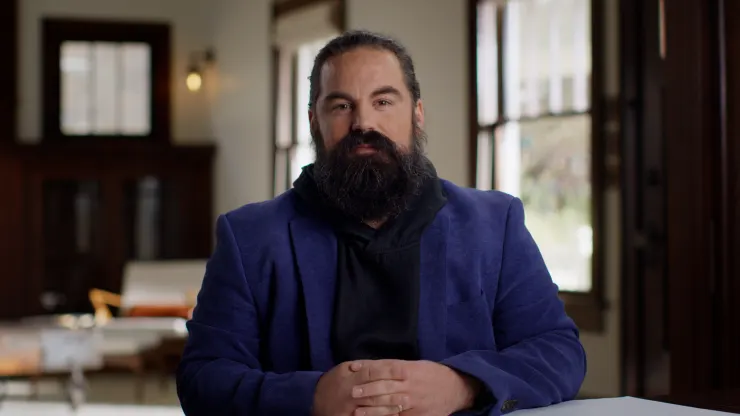In 2015, at age 30, Grant Sabatier, creator of finance website Millennial Money and author of “Financial Freedom,” had saved $1.25 million — enough to ensure he’d never have to work again.
Sabatier is an adherent of the FIRE movement in which people aim to save a large portion of their income, either by boosting their earnings or limiting expenses, in order to achieve financial independence and retire long before their 60s. They generally direct large sums of money into low-cost index funds or income-producing investments, which can eventually replace their salaries.
Like all FIRE supersavers, Sabatier’s strategy relied on a number of assumptions, including the amount of money he would need to live on. This number is based on a calculation that assumes the stock market will continue to deliver returns on par with historical averages and requires Sabatier to adjust his withdrawals for inflation.
Going forward, however, Sabatier says a huge risk factor means investors may not be able to rely on the same math that helped him achieve financial freedom.
“One of the biggest things people underestimated the risk of, that they’re starting to take stock of a bit, is the increasing uncertainty around the impact climate change will have on the growth of their investments,” he says.
How climate change could hurt your bottom line
Sabatier isn’t alone in expressing concern that climate change could hurt returns in the coming years.
“It’s mainstream enough that Janet Yellen came out and said climate is the biggest risk to the financial system. The Biden White House has said that people are severely underestimating the future risk and impact of the climate on financial markets,” he says.
While the exact impact remains to be seen, Sabatier recommends lowering your expectations for the kind of returns your portfolio can produce over the long term.
“People in the FIRE movement are waking up to the risk of the climate on their bullish and increasingly unlikely expectation that you can generate [an annualized] 7%,” he says. When it comes to holding broad stock market index funds, “I think a 4% or 5% expectation is more realistic than 7%.”
Some investing strategies seek to mitigate climate risk by investing in companies that score highly on sustainability metrics. Still, those are unlikely to solve the potentially broad threat climate change poses to markets, says Sabatier.
“I don’t think we can weasel our way out of it,” he says. “Yes, you might get lucky investing in the appropriate sort of company that’s offsetting carbon emissions. But it’s like any other stock pick. It’s more luck than anything else.”
In other words: Be prepared for the possibility that a traditional portfolio my offer lower long-term returns than you previously planned for.
Steps to take to protect yourself during retirement
For someone currently saving for retirement now, a 4% estimated rate of return means one of two things: planning for less income in retirement or adjusting your strategy to sock more cash away between now and when you eventually leave your 9-to-5.
For FIRE savers, it likely means that you can’t rely on your portfolio alone to fund your post 9-to-5 lifestyle. To achieve financial freedom, many FIRE adherents rely on the “4% rule,” in which retirees can safely withdraw 4% from their portfolio indefinitely without running out of money. That principleonly works if the rest of your portfolio is earning returns in line with historical averages. A 4% return renders it moot.
What’s more, a looming climate threat makes investing in other income-producing assets, particularly real estate, a riskier endeavor.
To keep your retirement plans on track, Sabatier suggests two adjustments.
1. Diversify your income
In an increasingly uncertain economic climate, “I think a lot more people should be taking their earning into their own hands,” says Sabatier. “I’m not even talking about having a side hustle. I’m talking about full-blown entrepreneurship.”
Building your own business allows you to be adaptable to the demands of a shifting marketplace while lowering your reliance on any one type of income, Sabatier says.
In a changing economy, being able to market your skills to an online audience is key, he says: “It’s kind of the golden age of making money online.”
2. Pay attention to location
Owning real estate — either as an investment or a primary residence — is a common path to financial independence, but not all locations are created equal. Phoenix, he points out, has chance of being “completely unlivable” in the coming decades, according to some climate scientists.
Livability, as well as the likelihood that companies will insure properties in certain parts of the country in the future, is a key consideration, he adds.
“For parts of the country, the models don’t look great, and then it becomes a question of, ‘Gosh, is my house a good investment? Can I stay here long term? Or should I be anticipatory and move somewhere?’”
There’s no guarantee that one locale will necessarily be better than another, but climate science can give you an idea, says Sabatier. “Living in Duluth, Minnesota, is likely significantly better on all measures than Phoenix, Arizona. So then it’s, do you want to uproot your life? Those are huge questions, but I don’t think you want to wait until it’s too late.”

